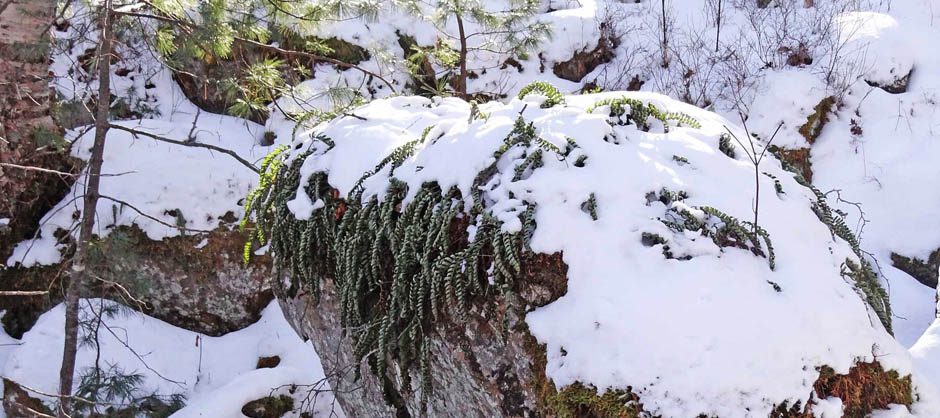Information from Terry Deveau, compiled by Martha Leary, fall 2022
“If I understand exactly which “concrete bunker” you are thinking of, it is actually a concrete cellar foundation, with an almost chest high concrete wall skirting the first floor, the rest of which was of wood and long since gone. It is located off the west side of the summit of the hill. This was a command centre. The summit itself contains the earthwork remains of five(?) artillery emplacements, which were fully functional, except for the fact that the guns were of plywood and telephone pole construction, and there was no live ammunition. There are also a couple of concrete pads up there which probably had equipment sheds built on them at the time. North of the summit there appears to be the rather completely demolished ruins of what I assume was the living quarters and mess, based on the extensive use of hot water heating tile duct-work. The general area around the hill also contains a number of less obvious remains of this WWII outpost, including small foundations for sheds, and other minor ruins.
Contrary to appearances, the military road used to access this site is not the “obvious” carefully graded path that leads north from the end of Oceanview Drive; rather, it can be traced (vaguely in places) eastward from the summit, to an eventual intersection with the Purcell’s Cove road roughly at the start of Oceanview Drive.
That wonderful path north from the far end of Oceanview Drive is actually part of a whole other story, which goes back to long before WWII. It is part of the Trolley Tracks railway that serviced the granite quarries. Remains of the old-style granite quarrying can be seen all around the east and south sides (especially) of the hill that has the antiaircraft battery ruins. The remains of the Trolley Tracks can be traced to a terminus on the north side of the hill, next to the location of the ruined WWII living quarters.
The Trolley Tracks originally started at Queens Wharf in Purcell’s Cove, the crossed the road and went up the hill, just to the right (north) of the present day Social Club. There is even a plaque on a boulder there commemorating them. Today, there appears to be two “cart tracks” going up the hill there. The one on the right has been fairly recently cleared of brush, and makes a nice walking trail, but I don’t think that was the original railway track. I think instead it was a (possibly later) parallel access road. The original rail bed, I believe, was the raised bed on the left, and it is still overgrown.
About two-thirds of the way up the hill, the road/track splits. The left branch continues to the Couglan Granite Quarry (and subsequently splits left and right again, near the summit). The right branch, however, goes to the older Queen Granite Quarry, which can be clearly seen in the area to the right of this branch, as it approaches the Oceanview Drive area. The housing development there makes it appear that the Trolley Tracks stop just behind someone’s backyard, but in fact they were there long before Oceanview Drive, and continue on the other side of it, north to the hill with the old quarry and antiaircraft battery
